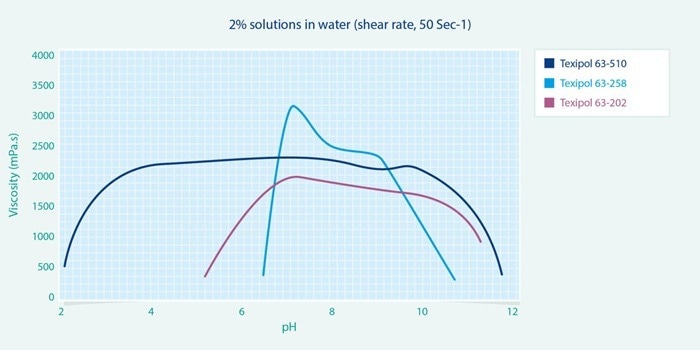From a technical standpoint, conventional emulsions can be understood as oil-in-water emulsions, whereby the continuous phase is water. Inverse emulsions are the opposite, for example, water-in-oil emulsions, where the continuous phase is oil.
Texipol inverse emulsions are directly manufactured from the pre-neutralized liquid monomers. These monomers are intimately dispersed in the oil phase, and a carefully controlled polymerization process yields the liquid thickener.
The diagram below highlights the core differences between conventional and inverse emulsions.

Image Credit: Scott Bader Company Ltd.
Mechanism and Benefits of Texipol Inverse Emulsion Thickeners
The addition of Texipol to water or a waterborne system sees the Texipol ‘inverting' with the help of water-soluble emulsifiers. This results in water becoming the continuous phase. Hydrophilic polymer particles rapidly swell, resulting in a highly swollen structure that leads to a notable increase in viscosity.
Texipol thickeners are supplied in a pre-neutralized form, meaning that thickening can be achieved without employing additional alkali or using surfactant. In most applications, Texipol thickeners can be added at any formulating stage, including post-thickening. This flexibility enables improved formulating flexibility.
A thickener fulfills three general roles when used in a typical formulation:
- Increasing viscosity
- Stabilizing the dispersion of insoluble components, such as pigments
- Modifying the flow
Formulation Guidelines for Texipols
Product Selection
Characteristics such as flow, rheology, and viscosity efficiency depend on the other ingredients present in a formulation. For example, both surfactants and dissolved salts can potentially impact the flow and efficiency of a Texipol-thickened solution.
Determining Concentration
Determining the precise concentration level of Texipol necessary for a specific formulation often requires experimentation, and this is also highly dependent on factors such as the required viscosity and the nature of any other ingredients in the formulation.
Typical Texipol applications requiring paste-like viscosities will generally start with a 2% (on total) addition level of Texipol and increase the amount until the required viscosity is achieved. Lower formulation viscosities may use 1% or less of Texipol.
As the polymer is pre-neutralized, the thickening effect will be virtually instantaneous under high-shear stirring. This can then be used to thicken a formulation at any stage of the manufacturing process. Adding additional Texipol at the end of a batch also increases viscosity up to the target level.
Adding Texipol
It is important to thoroughly and uniformly mix the batch to be thickened to ensure a homogeneous product and avoid local thickening. For the best results, it is advisable to employ high-shear mixing.
Issues may arise if the stirrer is too small or slow because it will fail to move the total batch. For example, the mix is not homogeneous if a localized thickening effect is observed around the blade.
It is also important to note that Texipol is shear stable, but thickened formulations will shear thin.
Potential Problems
High concentrations of dissolved salts and some surfactants will significantly reduce the viscosity efficiency of Texipol. Poly-vinyl-alcohol emulsions may also increase sharp viscosity in a select number of inverse emulsion-thickened compounds.

Image Credit: Scott Bader Company Ltd.
Acknowledgments
Produced from materials originally authored by Scott Bader Company.

This information has been sourced, reviewed and adapted from materials provided by Scott Bader Company Ltd.
For more information on this source, please visit Scott Bader Company Ltd.